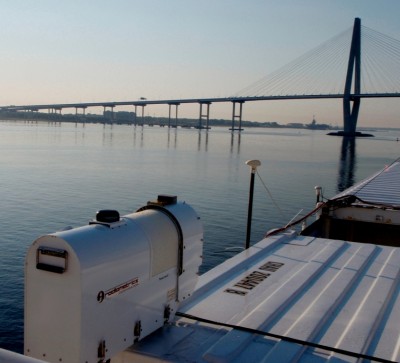Talk About Climate Change: Radiometer Moves from Arctic to South America
Published: 15 October 2008

The VAMOS Ocean-Cloud-Atmospheric-Land Study, or VOCALS, is an international field program designed to improve the understanding of the physical and chemical processes central to the climate system of the Southeast Pacific. The intensive observational portion of the regional experiment takes place off the west coast of Chile between October and November 2008. During this time, instrumentation on ships, aircraft, and a surface site will obtain data from the sea and sky. In support of VOCALS, ARM is contributing the most recent addition to its North Slope of Alaska instrument suite—the 183 GHz microwave radiometer (GVRP). Newly deployed in Barrow as of April 2008, the GVRP is part of the instrument suite on the research vessel Ronald H. Brown during VOCALS and will obtain measurements over the ocean of liquid water path in the atmosphere during this offsite campaign.
Initially developed to obtain high-quality water vapor measurements in the cold, dry, Arctic winter environment, the GVRP also has potential for retrieving small amounts of liquid water path in low-latitude stratocumulus regions under low-humidity conditions. This region in the Southeast Pacific is important to the planetary radiation budget because of the strong influence of precipitation and aerosols—either natural or manmade—on the radiative properties of clouds. Elements of the region’s climate system are poorly understood and not well represented in climate models. Data obtained by the GVRP will be analyzed to address long-standing questions on how precipitation and aerosol indirect effects vary with liquid water path for these climatically-important clouds.
The ARM Climate Research Facility is a DOE Office of Science user facility. The ARM Facility is operated by nine DOE national laboratories, including .
Keep up with the Atmospheric Observer
Updates on ARM news, events, and opportunities delivered to your inbox
ARM User Profile
ARM welcomes users from all institutions and nations. A free ARM user account is needed to access ARM data.


















